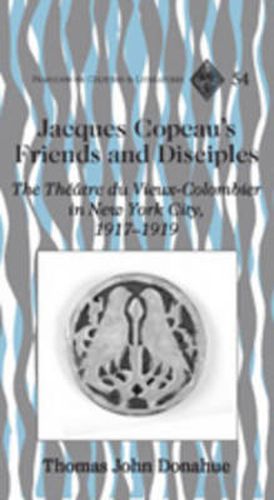Readings Newsletter
Become a Readings Member to make your shopping experience even easier.
Sign in or sign up for free!
You’re not far away from qualifying for FREE standard shipping within Australia
You’ve qualified for FREE standard shipping within Australia
The cart is loading…






In a remarkable adventure, Jacques Copeau brought the troupe of the Theatre du Vieux-Colombier to the Garrick Theatre in New York City in the fall of 1917. During the next two theater seasons, he staged more than forty different plays in repertory in French. He experimented with the use of both the treteau nu, a bare raised platform, for some of Moliere’s farces and the loggia or unit set for all his plays. Copeau’s experiments with scenography mark this period as a critical moment in the evolution of stage decor both in the United States and in Europe. Moreover, his development of a full repertory - sometimes three new plays in a week - demonstrated to the United States’ fledgling art theater movement how important a full repertory is for the actor’s continued training.
Jacques Copeau’s Friends and Disciples brings to light the support Copeau received from a diverse group of personalities without whom his undertaking would not have been possible: Otto H. Kahn, financier and supporter of the arts; Mrs. Phillip Lydig, a grande dame of New York high society; Antonin Raymond, the Czech architect who renovated the Garrick Theatre; Daisy Andrews, Copeau’s tireless factotum; Louis Jouvet, stage manager, actor, and scenographer; Charles Dullin, actor, director and teacher; Suzanne Bing, a member of the troupe who embodied Copeau’s ideals; and lastly Agnes Thomsen Copeau, Copeau’s loyal wife and companion. This study places the achievement of Copeau in the context of the developments of both European and American theater at the beginning of the twentieth century.
$9.00 standard shipping within Australia
FREE standard shipping within Australia for orders over $100.00
Express & International shipping calculated at checkout
In a remarkable adventure, Jacques Copeau brought the troupe of the Theatre du Vieux-Colombier to the Garrick Theatre in New York City in the fall of 1917. During the next two theater seasons, he staged more than forty different plays in repertory in French. He experimented with the use of both the treteau nu, a bare raised platform, for some of Moliere’s farces and the loggia or unit set for all his plays. Copeau’s experiments with scenography mark this period as a critical moment in the evolution of stage decor both in the United States and in Europe. Moreover, his development of a full repertory - sometimes three new plays in a week - demonstrated to the United States’ fledgling art theater movement how important a full repertory is for the actor’s continued training.
Jacques Copeau’s Friends and Disciples brings to light the support Copeau received from a diverse group of personalities without whom his undertaking would not have been possible: Otto H. Kahn, financier and supporter of the arts; Mrs. Phillip Lydig, a grande dame of New York high society; Antonin Raymond, the Czech architect who renovated the Garrick Theatre; Daisy Andrews, Copeau’s tireless factotum; Louis Jouvet, stage manager, actor, and scenographer; Charles Dullin, actor, director and teacher; Suzanne Bing, a member of the troupe who embodied Copeau’s ideals; and lastly Agnes Thomsen Copeau, Copeau’s loyal wife and companion. This study places the achievement of Copeau in the context of the developments of both European and American theater at the beginning of the twentieth century.